Wearables: 2014 and Beyond
by Stephen Barrett on January 15, 2015 11:50 AM EST- Posted in
- Wearables
- Apple
- Microsoft
- pebble
- Android Wear
- Microsoft Band
- Fitbit
Wearable Products in 2014
Microsoft
In 2014, seemingly out of nowhere (as there were no leaks or press ahead of time), Microsoft launched their first wearable since 2004 with the Microsoft Band. The Microsoft Band utilizes a Cortex-M4 processor and thus runs an embedded OS, not Windows NT. As with other devices using microcontrollers, its first focus is fitness tracking and not smart watch functionality (although that is also included). Microsoft however does fitness slightly differently than their competitors and actually regards this as the launch of both the Microsoft Band and their health platform, Microsoft Health.
Microsoft Health is a cloud service, such as OneDrive, that aims to help improve the health of its users through data analysis and actionable feedback. Activity tracking devices and apps that connect to Microsoft Health publish data, with your permission, to the Microsoft Health server. Microsoft claims their cloud data framework and analysis provides the only total health service available. Additionally, the Microsoft Health framework is referred to as an open platform, therefore other companies can interface with it as both publishers of data and subscribers of analysis. Microsoft Health also connects to the existing Microsoft service, HealthVault, which contains personal and family medical information and lab results.
The Microsoft Band itself is the combination of 10 sensors, including some interesting ones such as skin temperature, UV light, and galvanic skin response. Uniquely, the Microsoft Band works with all three major mobile operating systems (iOS, Android, and Windows Phone) by connecting to the corresponding Microsoft Health app. However, you can perform activities (such as running) without a paired device.
Another unique feature is the continuous heart rate monitoring. Other devices, such as Android wear, only periodically query the wearer’s heart rate. Microsoft claims this allows them to do better holistic analysis of health. In my experience with the Moto360, depending on how tight you wear the device, the heart rate sensor may not work. Comparatively, the Microsoft Band is mechanically designed so the best way to wear it is always in close contact with your skin. Finally, Microsoft will even license the electronics and software design of the Microsoft Band for other companies to create their own wearables connected to Microsoft Health.
The band itself provides some smart watch features such as calendar, email, and messaging notifications. When paired with a Windows Phone, Cortana support is also available for similar functionality to Google Now. One difference between Android Wear and the Microsoft Band is with app interfacing. As mentioned previously, Android Wear relies on apps running alongside (on your smartphone) or on the device to do things such as run tracking. The Microsoft Band instead has built in support for run tracking, and can publish that data to both Microsoft Health and any compatible app like RunKeeper. Therefore, the Microsoft Band out-of-the-box has several fitness related functionalities without relying on 3rd party apps.
Given my less-than-stellar experience with RunKeeper providing run tracking on Android Wear, a first party approach to fitness is appealing. However, it remains to be seen if Microsoft can keep pace with the wide open field Android Wear provides to app makers.
All of this combined makes a strong argument that Microsoft is ahead of their competition for health related wearables. Google has Google Fit, which plans to provide similar cloud-health functionality and already has some APIs for apps to connect with it, but the web site for Google Fit is downright embarrassing and looks like a simple placeholder with almost no valuable information. Google also had Google Health, which was similar to Microsoft HealthVault, but Google shut down the service in 2011.
I have requested a Microsoft Band for review to analyze how well Microsoft has executed both the Band and Health launches. There are of course other aspects to the Band (such as guided workouts) I will cover at that time.
Apple Watch
While this is a 2014 year in review article and Apple technically did not launch anything in 2014, it is worth mentioning their announcement of the Apple Watch. In America at least, it is often the case that a technology will arrive on the market well ahead of Apple’s embrace and not see widespread acceptance. When Apple finally deploys the same technology, the technology crosses the chasm and sees widespread proliferation. NFC payment and Apple Pay are a good example. I saw one or two places offering NFC payment before Apple Pay; now there are dozens. Therefore, Apple announcing the Apple Watch is a watershed moment for wearables.
Officially coming to market in spring 2015, the Apple Watch experience appears to be more similar to Tizen based Samsung devices than Android Wear. To start with, the device itself contains WiFi in addition to Bluetooth and therefore should have more freedom than a standard Bluetooth enabled wearable. The core functionality of the device also does not revolve around Siri but appears to be a full blown iOS style launcher.
The Apple Watch likely uses an application processor (AP) and does not rely entirely on a microcontroller. This also correlates with the Apple estimated battery life of one day due to high consumer usage, as an AP will draw more power than a microcontroller when in use. The exact quote from Tim Cook is, “I think given my own experience, and others around it, that you’re going to wind up charging it every day. Because you’re going to use it so much.” Utilizing an AP opens the doors to more use of frameworks and APIs than low-level embedded coding, and therefore facilitates the 3 party app model.
Apple intelligently recognized the need for personalization and styling in a wrist worn wearable and will offer a staggering 34 different models of the device with varying cases, sizes, bands, and editions (Sport, Standard, Gold). Two interesting innovations set to launch with the device are a pressure based touch screen and a tap feedback output, providing a tap sensation in addition to a traditional vibration. We will have more coverage of the Apple Watch when it launches in 2015.
Others
Several other wearables exist (and are more popular in the case of Pebble and Fitbit), but these are going to face an increasingly difficult battle for relevancy in the face of efforts from the main software ecosystem players – Apple, Microsoft and Google. However, Microsoft’s strategy of licensing hardware design and Android’s more off-the-shelf operating system approach means we should continue to see unique wearables going forward.
Pebble Steel
Pebble is likely the most mature smart watch wearable at this point, given its launch in 2013. Pebble devices possess many days of battery life, a unique perk over the competition. Pebble owes its battery life to the use of a low power microcontroller, low resolution e-paper display, non-touch screen, and only three sensors (accelerometer, compass, light sensor). Therefore, this is certainly not a smartphone on your wrist.
Interfacing with Pebble is accomplished with the set of four buttons on its sides. Pebble began as a dedicated notifications assistant, relaying notifications from paired devices, but has since expanded with some simple apps from 3rd party developers like QR code display to more complex apps such as GoPro control and RunKeeper. In 2014, Pebble launched the follow up, Pebble Steel. The Pebble Steel upgrades the mechanics from plastic to metal, and as I noted with my time using the leather banded Moto360, metal is much appreciated.
Pebble boasts the best water resistance of the lot, at an incredible 50 meters of depth. Other devices sporting IP67 are only okay up to a meter for 30 minutes, meaning if you jump into a pool you need to be very careful how far you let your arm drift down so you might as well take the device off.
FitBit Charge and Surge
Fitbit launched as an activity tracker in 2008 and has since been iterating on their designs. The first several revisions were clip on devices attached to your clothing, but since the Fitbit Flex in 2013 all have been wrist worn. I personally see wrist worn Fitbit devices everywhere and even worn as fashion accessories. My sister wears a Fitbit that is so decorated with 3rd party accessories it is difficult to discern it as a Fitbit instead of a simple bracelet.
These devices track steps taken, calories burned, and distance traveled. They can also do sleep tracking if you wear them 24 hours a day. Groups of coworkers or friends can use a connected smartphone app with social features to compete on how many steps taken and individuals can set personal step goals.
The Fitbit Charge launched in November 2014 and contains a small OLED display that boosts the utility of the Fitbit. The display shows the time, how many steps taken, and displays caller ID if your paired smartphone rings. The time and steps taken display are of notable utility as they prevent a trip to a pocket or purse to find the same information.
The Fitbit Charge HR supplements the Charge with a heart rate sensor. This expands the Fitbit further into a fitness device and begins pushing Fitbit into active activity tracking, such as running or cardio workouts. Alongside launching the Charge HR, Fitbit also expanded their app to record workouts, food eaten (through a barcode scanner or manual entry), and badge earning through workout goals. This was a significant launch for Fitbit to leverage their popular steps tracking position into remaining competitive with the bigger smart watch players.
The Fitbit Surge was announced in 2014 but will launch in early 2015. The Surge adds GPS and an LCD display to extend Fitbit’s activity tracking and smart watch functions.



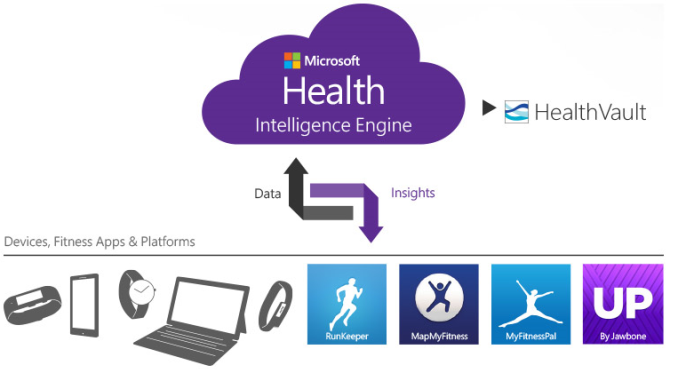
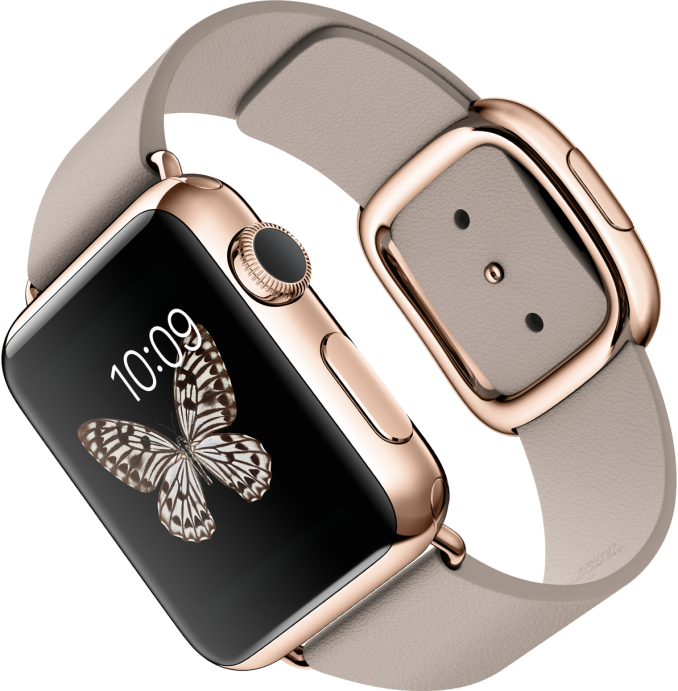
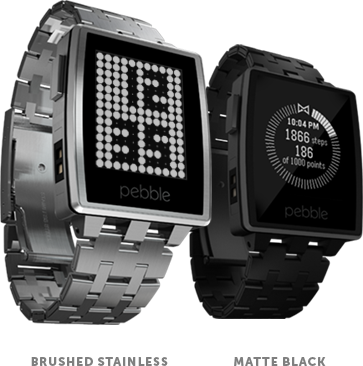
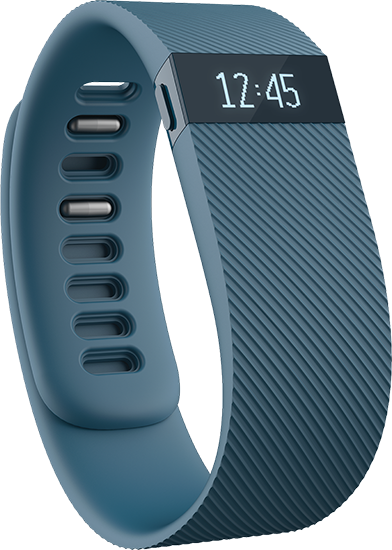
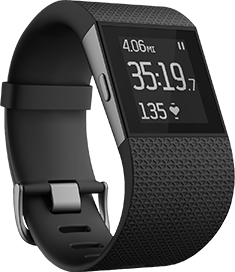








79 Comments
View All Comments
Stephen Barrett - Thursday, January 15, 2015 - link
I agree there are plenty of problems with that idea, hence no one is covering it now, but its still an interesting idea. Throw enough technology (and different technology than today's non-mesh bluetooth pairing annoyances) at it, and it might work.I agree on wearables are most useful when they do most everything for you. Which is why, while the Push wearable is cool, I'm not super excited about it because of the manual data entry.
dullard - Thursday, January 15, 2015 - link
In my opinion, the biggest thing holding back wearables is the assumption that you have a smartphone handy. That smartphone link requirement on almost all wearables really eliminates many use cases where wearables would have a definitive advantage. Essentially wearables have been turned into a device intended to shave a few seconds from the time needed to grab your phone. That's not much gain for a lot of cost and the hassle of carrying around and charging yet another device.Manufacturers need to think of a wearable without a smartphone. Obviously, that dramatically increases your sales base to those without smartphones. But also think about these uses:
(a) Think about women at work who often don't have pockets, often don't want to carry their purse everywhere, and often don't have a belt to attach a smartphone to. Wearables would be perfect for these office workers since they often don't have a smartphone on them. But no, the wearables force users to have a phone AND the wearable at the same time.
(b) Think about workers whose hands are often not available to reach for a phone or whose jobs prevent carrying around most phones (construction work, chefs, anyone who drives a lot, people working in wet environments, people working in information sensitive jobs where phones aren’t allowed, etc.) There are millions of people who can't have their phone with them, but of course, the wearables assume you have a phone right there.
(c) Think about the people at the gym who really don't want to carry around a bulky phone AND a wearable. I have a Jawbone Up24 and it has so much potential, but it is underutilized since I need my phone in front of me to see my workout as I workout (which is difficult for most equipment). Or think about people going out on the town, who don't want to lose an expensive phone with all their valuable information. Or think about people who want to go into the country (such as mountain climbing, forest hikes, beach walks) where cell phones die a quick battery death unable to maintain a connection.
I could go on and on for uses without a smartphone nearby.
The best wearable for me would have wi-fi, e-ink style screen, and a couple of useful sensors. It would turn on once a minute to update the e-ink clock, turn on wi-fi to get notifications, and display any notifications. Then it would go to sleep for another minute using virtually no power for the next 60 seconds. No smartphone would ever be needed, certainly not one nearby. It would have a long battery life. You can get all the data you actually need in nearly real-time, such as last-minute meeting requests or room changes. Almost everyone could use it. Then if you want to type a novel, email, etc, go to a computer, tablet or smartphone--don't try to cram computer uses into a tiny screen.
Impulses - Thursday, January 15, 2015 - link
I think a lot of the people in category B (minus the sensitive data/govt workers) still carry their phone all day long... They just don't wanna grab it because their hands are busy, dirty, etc. The current crop of wearables are perfect for them, I'm in that category.Truly useful wearables with built in data connections would strain batteries even harder and would require some cooperation with carriers as far as data plans etc. No one wants to pay a monthly fee for a wearable...
bodonnell - Thursday, January 15, 2015 - link
I traditionally have always wore a wrist watch as I like being able to know the time at a glance. I first jumped on the bandwagon with a Nike Fuelband but found it wasn't quite for me and this Christmas was gifted a Pebble Steel which I discovered is pretty much perfect for my use case. With the always on display I can see the date and time as well as the weather at a glance, the notifications save me time as I can see texts, phone calls and emails at a glance and avoid pulling out my phone for things that I don't need to respond to right away (or calls I would prefer to ignore) and it does (basic) fitness tracking as well. It also only needs to be charged (on average) every 5-7 days and at $200 it's just as affordable as decent wrist watch anyway. I was originally thinking I'd jump onto the Apple Watch bandwagon when it comes out but now I think I have everything I want out of a smart watch for now and will wait to see what happens when the wearable market matures.Impulses - Thursday, January 15, 2015 - link
Yeah, I've actually never been someone that needs to read every notification on the spot and will interrupt a conversation etc to take out my phone and see what's beeping... But having a Wear watch lets me stay on top of stuff better and use the phone even less.I can certainly live without it, when I'm sitting in front of the computer at home I take it off... But it's a huge convenience most of the time, not having to look at the watch to see random texts, package delivery notifications, calendar reminders, music control, etc.
I'm not sure there'll ever be a "killer app", just like tablets, it's a luxury. Convenient and possibly more comfortable at times, but a luxury nonetheless and either you enjoy it or you don't. With fashion playing a bit more of a role and the cost of miniaturization, I'm not sure how feasible a race to the bottom will be.
Impulses - Thursday, January 15, 2015 - link
To that I'll add, I never used voice search on my phone because once it's on my hand it's almost always quicker to type... But I've found myself using it on a watch for quick simple answer queries.MrSpadge - Thursday, January 15, 2015 - link
"What do you desire from an AnandTech wearable review?"I'd like to know if there's any "killer application" which might convince me of their usefulness. I'm still using my Windows Mobiile 6.1 Dumbphone, so that would be pretty hard.
RT81 - Thursday, January 15, 2015 - link
During the Apple Watch keynote, Tim Cook mentioned something about someone using the Apple Watch as a view finder for the camera. I'm sure that's probably not very interesting for most people, but it is for me. I've used my iPhone camera as something like a poor man's borescope. It would be interesting to be able to use the Apple Watch for that.I'm betting that some very creative and enterprising developer out there will come up with apps we've never thought of.
Impulses - Thursday, January 15, 2015 - link
I thought the black 360 looked cheaper than the silver one too Stephen, at least when I first saw them in person side by side. I think any wearable evaluation is gonna require a degree of, well, wear-in testing...I know AnandTech has never been about rushing reviews, but there are issues that will crop up with these devices only after wearing them for a month (like my grey 360 band sweat staining, the aftermarket brown one I replaced it with has fared better and it's more supple).
Further, there are issues only some users will experience (like the allergic reactions to some Fitbit bands), I know having more than one reviewer on any one product has always been tricky for AT but still...
Geoplace - Thursday, January 15, 2015 - link
I think that is very important that voice recognition must be available when there is no Wi-fi or celular data. So you could still use it while driving for example. I have experience that android voice recognition is mainly for when you have data connection. Right?